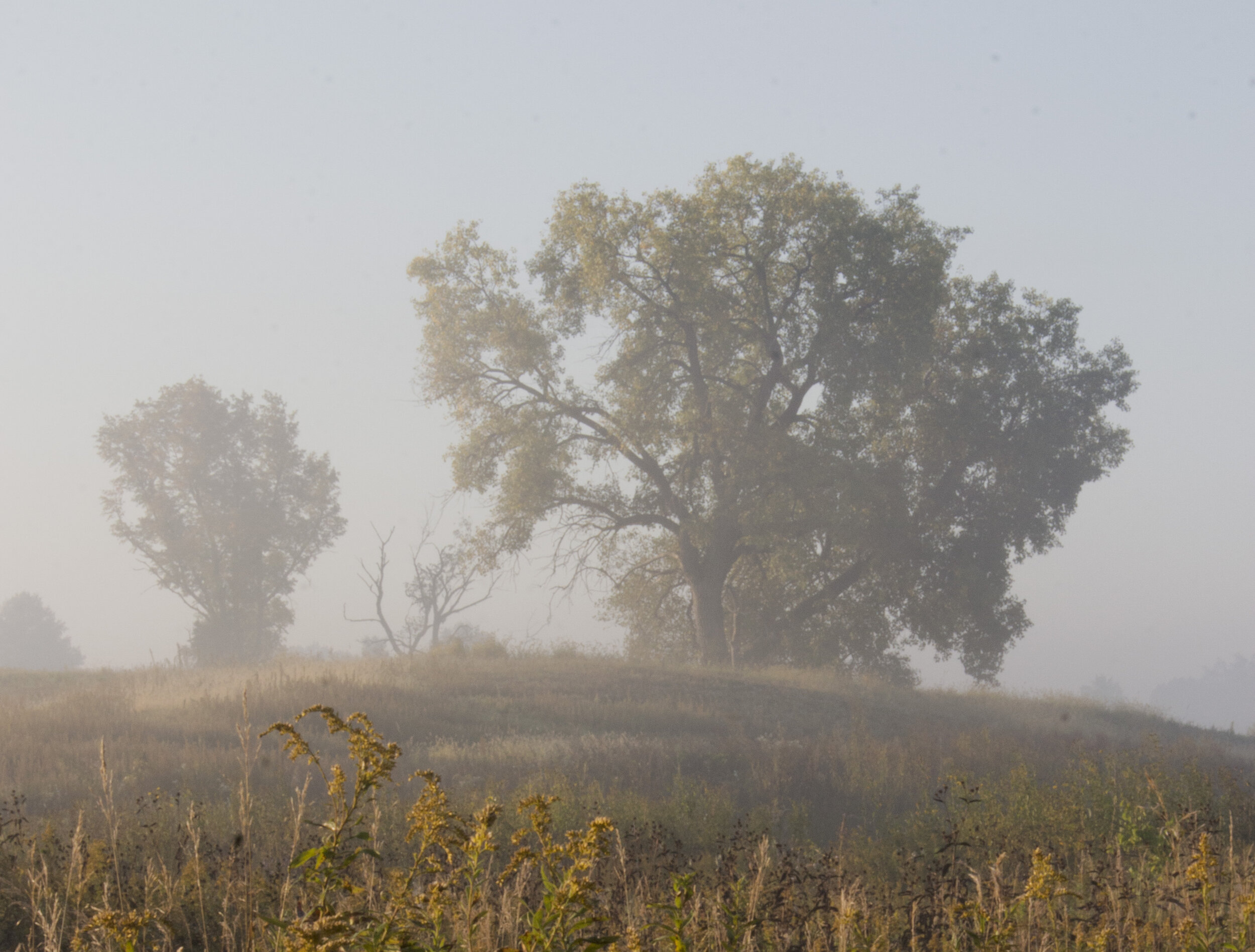Reviewing some of my field observations from the last couple of years, one notable species I found was the Least Flycatcher, which has breeding pairs along the Crawfish River floodplain. This area represents a bit of a mystery for management at Faville Grove. Much of the floodplain east of Martin and Tillotson prairies floods annually. Sedimentation and nutrient inputs from the Crawfish River have fueled the invasive reed canary grass throughout large swaths of the floodplain, and unfortunately, little can be done to remediate this invasive due to these underlying issues. However, because of its link to the floodplain and the generally wet conditions, prescribed burns don’t always burn completely through the floodplain. The lack of fire has allowed the replacement of reed canary grass, because trees have shaded it out. Young ash, aspen, cottonwood, and willow trees have formed an interesting lowland forest.
Crawfish River photo by Wanderer 86 FCC
The Crawfish River historically marked a sharp ecotone between tallgrass prairie and savanna on its west side (at Faville Grove) and hardwood forest on its east side. Even today, small woodlots on the east side of the river still harbor spring ephemerals under maple, elm, and basswood trees; while many of the slivers of habitat in the Faville Grove area contain more representative prairie species like big bluestem, heath aster, and prairie dock. How does all of this relate to our Least Flycatchers? To this day, some large blocks of woodland remain on the east side of the river, which may be a source population for the Least Flycatchers we have at Faville Grove on the west side of the river.
Least Flycatcher photo by Kelly Colgan Azar
Unfortunately, human caused climate disruption may soon wipe out Least Flycatchers at Faville Grove. Under the mildest warming scenario of 1.5 degrees Celsius, Least Flycatchers are projected to migrate north, clear out of the state of Wisconsin. This is happening fast. The IPCC projects a 1.5 C warming just ten years.
I’ve enjoyed the sharp snapping call of the Least Flycatcher as the fog lifts from the floodplain on summer mornings. I first knew the call from far northern Wisconsin forests. Hearing the song at Faville Grove for the first time, I wracked my brain for that song, excitedly realizing I had known it at some point. Within the past two weeks, the Least Flycatcher has made its way south to Mexico and Central America.
Foggy Faville Grove morning photo by Jeff Pieterick
Within a decade, we probably won’t hear its summer song from the limb of a young cottonwood on a July morning.
Written by Drew Harry, Faville Grove Sanctuary land steward
Cover photo by Andy Reago & Chrissy McClarren








